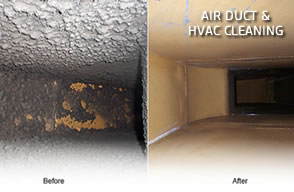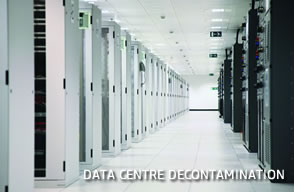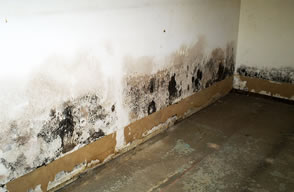HVAC systems should be cleaned at regular intervals, especially if the system conveys combustible material such as grease or organic dust. The aim of this study was to develop a system to verify the cleanliness condition of HVAC systems.
Methods to Measure Contamination
Microbe Contamination
- The contact method and swab method were used to measure microbe concentration on the duct surface.
- Laboratory and field studies indicated that microbial concentrations measured using the contact method were lower than those using the swab method.
- The upper detection limit of the contact method was 5–10 CFU/cm2.
Mineral Fibres
- Two tape sampling methods, the gelatine and the carbon tape, were used to measure mineral fibre contamination on ventilation ductwork.
- Samples were analysed with an optical and a scanning electron microscope (“SEM”).
- The gelatine tape method was found suitable for light microscopic analysis and allowed counting of fibres on the surface.
- Mean fibre concentration of the studied HVAC system was 112 fibres/cm2 (11–1490 fibres/cm2) with the gelatine tape.
- The carbon tape method, applicable to SEM analysis, allowed analysis of the chemical composition of fibres.
Visual Evaluation
This method employs a visual inspection form and visual cleanliness scale to evaluate cleanliness of the HVAC system. A robot with a video camera is used for visual inspection of the entire ductwork.
Measurement of Thickness of Dust and Grease

- A simple comb method (Figure 1) was developed to evaluate the thickness of dust and debris on the duct surface. The developed comb and the deposit thickness test (“DTT”) method introduced in the British guideline (Figure 2) were tested in the laboratory and field.
- The results of the deposit thickness methods were compared with the vacuum test method (Figure 3).
- The laboratory tests found that dust accumulation measured with the comb method correlated with the vacuum test method (R2 = 0.5–0.9) when the dust layer was homogeneous. No correlation was found when dust accumulation was heterogeneous.
- In the field test, the mean amount of the grease layer varied between 34–142 g/m2 measured with the vacuum test method and 0.1–1 mm measured with the comb method. The correlation between the comb and the vacuum test method (Figure 4) and between the DTT and the vacuum test method (Figure 5) was 0.84 and 0.9 respectively.
SUMMARY OF MEASUREMENT METHODS
Visual
A visual cleanliness scale, a visual inspection form and a simple deposit thickness comb were developed for the systematic visual evaluation of the cleanliness of air ducts. A robot video camera was used for visual inspection of the entire ductwork.
Dust and Debris
The amount of dust and debris was measured using the vacuum test method and the thickness of the grease layer with the DTT method, if the cleanliness level of the ducts is not clear enough visually.
Microbial Contamination
Microbial contamination was measured with the contact method, and fibre contamination with the tape sampling method.









